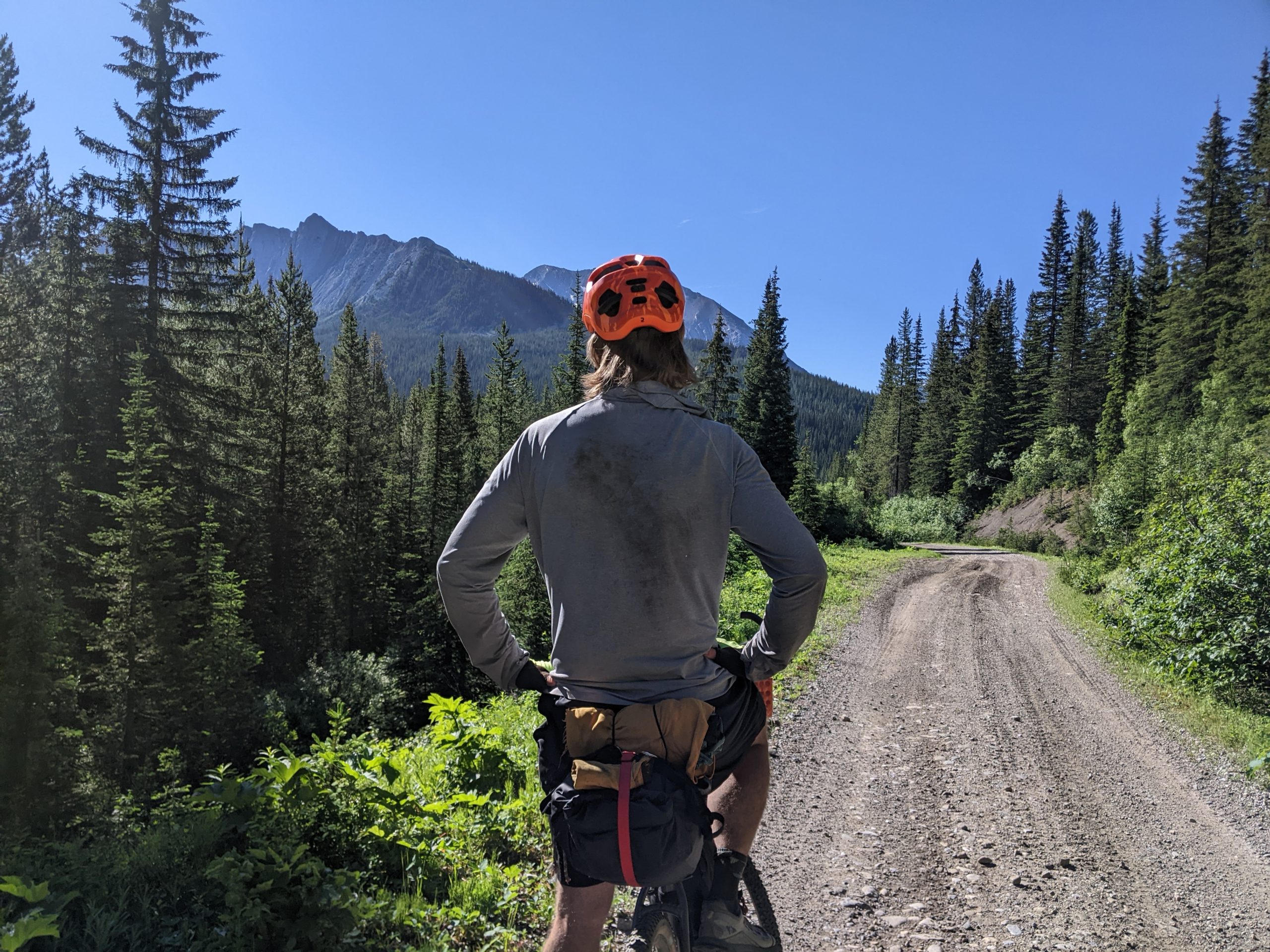How to Pick the Perfect Sun Hoodie for Your Next Hike
If you’ve been on any long trail lately, you’ve seen hikers wearing trendy sun hoodies. These long-sleeved garments are replacing Hawaiin shirts and collared button-ups as the thru-hiker’s shirt of choice. Are you ready to make the switch and try out a sun hoodie? Here’s what you need to know.
What Is a Sun Hoodie?
Sun hoodies are long-sleeved shirts designed to protect you from the sun. Unsurprisingly, sun hoodies feature a hood that helps keep the sun off your ears, neck, and the top of your head. They are available in various colors, fabrics, and styles from many outdoor brands. Most are lightweight, breathable, and dry quickly.
Why a Sun Hoodie?
No one wants a sunburn (or worse, skin cancer) on a thru-hike. Long-sleeved clothes are the best way to protect yourself from the sun. Less exposed skin means you need to carry less sunscreen, which is heavy, feels greasy on the skin, and leaves you vulnerable to burning if you sweat it off. Sun protection is especially important on exposed trails without a lot of shade or at high elevations.
Hoodies are also loose-fitting, which can help keep you cool on hot days. They are engineered to dry quickly, which is fantastic if you’re sweating a lot. Some shirts have an array of features, from thumb holes to ponytail ports, to help keep you comfortable on the trail.
Ready to try out a hoodie? Here are a few features to consider.

This hoodie was extremely breathable. However, it did not give me enough sun protection for the exposure on my trip.
UPF
Not all sun shirts are created equal when it comes to sun protection. Ultraviolet Protection Factor (UPF) ratings indicate how much harmful UVA and UVB light protection a garment provides. The higher the UPF, the better the protection. A UPF 50 shirt will block 98% of UV from reaching your skin.
Be careful when choosing a sun hoodie that the UPF is sufficient for your trip. I used a sun hoodie with UPF 15 on a two-month bike trip this summer. I was shocked to find that I had tanned right through my shirt after just two weeks on trail. Luckily I didn’t burn, but I learned my lesson. Just because a shirt is marketed as protective doesn’t mean it’s enough for an exposed, high-elevation trip. My husband used a UPF 50 shirt and is still pasty white. UPF is important, and next time, I’ll pay more attention.
Breathability
Sun hoodies are designed to be worn in hot environments, so it makes sense to look for options that will help keep you cool. Breathable fabrics allow airflow, which makes hiking in the desert much more pleasant. A hoodie’s level of breathability depends on the knit of the fabric used: a looser weave allows more airflow. However, a tighter weave provides more UPF protection, so the most breathable clothing will often compromise on sun protection.
The right shirt for your trip will depend on how much shade you expect to find along your route and whether you’re pairing your shirt with other sun protection, like an umbrella.
Quick Dry
Most hoodies are made out of quick-drying fabric like polyester. This is fantastic for hikes where you’re getting sweaty but want to ensure your shirt is dry before camp. Desert hikes, in particular, can feature huge temperature swings, and quick-dry fabric means you’re not hiking during cool evening temperatures in a sweaty shirt. This feature is also fantastic for short rain showers when you’re certain the sun will come out afterward—no need to don sweaty rain gear if it’s warm and your shirt dries in five minutes after the rain passes.
I did find a drawback to quick-dry fabric during extreme heat adventures. Soaking your shirt in rivers and lakes is a great way to cool off for a while. However, my OR Echo hoodie dried in about five minutes in 95˚F heat, meaning my relief was short-lived. If a wet shirt is part of your strategy for staying cool, you may want to try a different fabric.
Comfort
This isn’t unique to sun hoodies, but make sure you consider how comfortable your shirt will be under your backpack before you commit to a specific style. Personally, I think sun shirts are perfect for backpacking. Full coverage from the sun also means that your shirt protects you from all the places your pack might rub on your arms and shoulders. The hood provides a higher neckline, which helps keep my pack straps from rubbing on my neck.
Not all sun hoodies are created equal when it comes to comfort. If you’re prone to skin irritation or chafing, make sure you check the seams on your garment before you commit to a specific brand.
Flatlock seams will rub less, but some cheaper sun hoodies don’t offer this feature. Flatlock seams are easy to spot- the stitching and seam is flush with the fabric, rather than sticking out like a traditional seam.
Also, consider where the seams lie on the garment. Seams directly on your shoulders will rub under your pack straps. Many sun hoodies are designed with the seams further down your arms to eliminate this issue. This type of seam placement is called Raglan sleeves, and shirts that feature this will normally specify in the garment descriptions online.
Durability and Dirt
Some of the best hoodies are extremely lightweight, with thin fabric offering outstanding breathability. This sometimes comes with a major drawback: durability. My most breathable hoodie has multiple pulled threads in the fabric and catches on even the lightest bushwhack. Thicker hoodies are less fragile, but you sacrifice some breathability in turn.
There are darker-colored sun hoodies available, but most hikers will opt for a lighter-colored shirt to help them stay cool. I found that light-colored hoodies really show dirt and grime. Personally, I don’t really care about looking dirty on a thru-hike, but if you do, you might want to opt for either a fun pattern or a darker color to hide the muck.
Features
There are almost as many fun features available as there are different brands of sun hoodies. Here are a few to look out for:
Thumb Holes
Thumb holes are comfy, cozy, and help keep your sleeves down far enough to cover at least part of your hands. They are superfluous if you use sun gloves, and you may find they are uncomfortable to use with trekking poles.
Ponytail Port
If you’re a long-haired individual, a ponytail port helps keep your hair back and out from under your hood, which helps keep you cool. If you have short hair, you won’t care about this feature.
Zippered collar
Most hoodies feature a high collar with no zipper, which helps keep the sun off your neck but can make managing airflow more difficult. A few shirts, such as the Ibex Indie Merino Wool Sun Hoodie, do have zippers if this is important to you.
Pockets
Most sun hoodies don’t have pockets, and I find that I don’t miss them- after all, my backpack can carry everything I need. If pockets are your jam, or you want to wear your hoodie off of the trail too, check out pocketed options like the Jolly Gear shirts.
Products
Almost every outdoor clothing company currently offers a sun hoodie. Here are a few options that The Trek has tested out for you—plus two that I liked enough to spend my own money on.
Outdoor Research Echo Hoodie (Men’s | Women’s)
- MSRP: $69
- Fabric: Recycled Polyester
- UPF Rating: 15
- Pro: So breathable I forget I’m wearing it
- Con: UPF 15 means you tan through your shirt
REI Co-op Sahara Shade Hoodie ( Men’s | Women’s)
- MSRP: $49.95
- Fabric: 92% Polyester, 2% Spandex
- UPF Rating: 50
- Pro: Comfy budget option that’s frequently on sale
- Con: No flatlock seams or Raglan sleeves
Ibex Indie Merino Wool Sun Hoodie (Men’s | Women’s)
- MSRP: $170
- Fabric: Merino Wool
- UPF Rating: 50
- Pro: One of the few sun hoodies with a zippered neck
- Con: Crazy Expensive
Jolly Gear Sun Hoodies
- MSRP: $95
- Fabric: 86% Polyester, 14% Spandex
- UPF Rating: 30
- Pro: Fun patterns!
- Con: Limited availability
Backcountry Tahoe Sun Hoodie (Men’s | Women’s)
- MSRP: $69.95
- Fabric: 78% nylon, 14% spandex, 8% polyester
- UPF Rating: 30
- Pro: Durable
- Con: Sleeves can be too long
Read our review of the men’s Tahoe here and the women’s Tahoe here.
Patagonia Capilene Cool Daily Hoodie (Men’s | Women’s)
- MSRP: $59
- Fabric: Recycled Polyester
- UPF Rating: 50+
- Pro: 50% recycled material
- Con: No thumb loops
Featured image: Graphic design by Chris Helm (@chris.helm).
This website contains affiliate links, which means The Trek may receive a percentage of any product or service you purchase using the links in the articles or advertisements. The buyer pays the same price as they would otherwise, and your purchase helps to support The Trek's ongoing goal to serve you quality backpacking advice and information. Thanks for your support!
To learn more, please visit the About This Site page.








Comments 9
My wife’s Mountain Hardware hoodie weighs three ounces less than my Black Diamond Pro and doesn’t show dirt or sweat as much.
Montbell cool hoody
flat seams
spf 50
zip neck
thumb loops
6 oz
thru pocket
hood visor
need I say more
The Patagonia Capilene Cool Daily Hoodie is NOT UPF rated- confirmed with Patagonia.